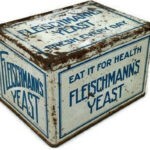What can you say about Kleenex Tissue?
Kimberley Clark built a highly successful advertising campaign
based on the claim that Kleenex Tissue “pops right up to meet you,” because it is “the only tissue that meets you halfway”.
A facial tissue is a tissue! Right? How can one be distinguished from another?
Look over the shoulder of the advertising copywriter staring at the box of Kleenex. What can he or she say about the product? It’s soft? Yes. It’s strong? Yes. So is every other tissue. In fact, buyers called every tissue Kleenex. Still do! The tradename and trademark are protected by Kimberly Clark — Kleenex isn’t legally generic—but that hasn’t stopped consumers from calling for a Kleenex when they want a facial tissue.
Back then to advertisements that appeared in Good Housekeeping in 1952 and 1954 and the solution to the problem facing the copywriter: What is different about Kleenex?

Two years, later Kimberly Clark continued to remind consumers
that Kleenex tissues “pop up” one at a time.
Here’s an advertisement featuring Little Lulu, the first mascot for Kleenex tissue.

Ever fumble for a tissue in the middle of the night—When you want one in a hurry without turning on the light
Next time, don’t let an ordinary brand or box defeat you! Keep Kleenex tissues near your bed — they pop right up to meet you!

Kimberly Clark made paper for 140 years. Founded in 1872, the company operated its own paper mills around the world, even owned a paper mill jointly with The New York Times in Kapuskasing, Ontario, Canada. They sold it in 1991.
Today Kimberly Clark is renowned, not for its newsprint and fine paper, but for its paper-based consumer products—Kleenex facial tissue, Kotex feminine hygiene products, Cottonelle, Scott and Andrex toilet paper, Wypall utility wipes, KimWipes scientific cleaning wipes and Huggies disposable diapers and baby wipes.






